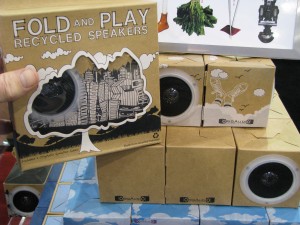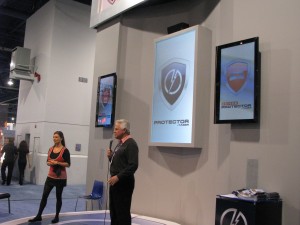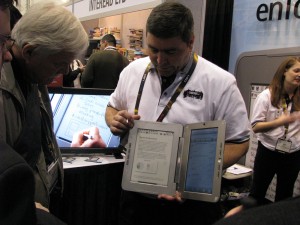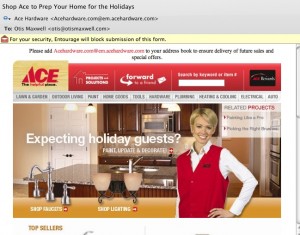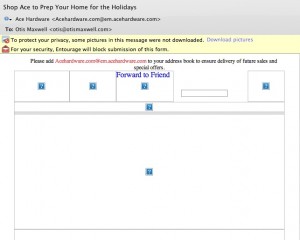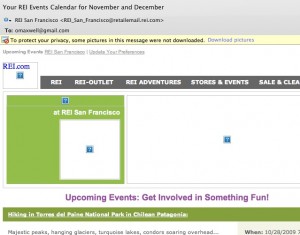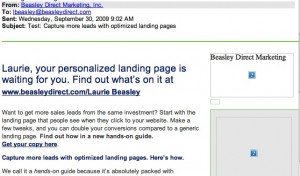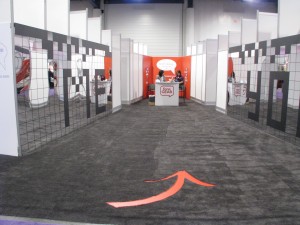
Can you create buzz at CES without showing any product? A couple of companies tried exactly that. First up is a company called foneGEAR. They decided sometime before the show to completely revamp their product line and positioning so, rather than show their current product, they elected to turn their large and expensive booth into a giant “coming soon” sign. The curious were funneled down a mirrored passageway where a single booth rep swiped their card and gave them a key code to unlock a product preview on their website. Booth traffic was pretty light… it might have been a good idea to put a few teaser messages on those long blank walls.
The case of PowerMat is more interesting. Their booth was jammed on Friday and I couldn’t get a demo because they were tied up with Good Morning America. All this with no product on display, just a loop of TV commercials in which hipsters place their iPhones and other portable devices on a pad and it goes bzz! and starts charging. Wireless charging, that’s cool!
But since I didn’t get the demo I read up in the press kit, and discovered PowerMat’s secret: you can’t just fling the device down, it has to be in a special inductive power sleeve that’s not obvious in the commercials. And early users and reviewers have lots of complaints like: it’s hard to get the sleeve on and off; it’s too bulky; it interferes with the compass in the GPS.
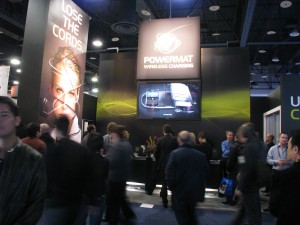
I returned Saturday and asked a booth staffer why they aren’t exhibiting product. (Meanwhile, traditional media guys are circling waiting for their demos like hungry sharks, sensing they’re really onto something. After all, everybody knows the pain of plugging in to charge your phone. Oh, to be free!) He said they did have product out the first thing on Thursday and there was such a mad scramble for it they put it away.
Now, this isn’t a stealth product. You can buy it at Amazon and Best Buy. I’ll take him at face value, even though creating mystery around a buggy product rather than showing seems like a pretty cool marketing strategy. Pay no attention to that man behind the curtain..
